|
|
| Fruit,
Vegetables and Gourds |
Cheung Choi |
|
Cheung Choi is probably the leaf most
widely used in Mainland Cantonese cookery. It is a quick
growing leaf that is very easy to cultivate, and as
such can be found in virtually every wet market or supermarket.
It features large oval leaves and small yellow flowers.
It is part of the mustard family Brassica rapa
subsp. parachinensis, which is also known as
Choi Sum. However, Choi Sum refers to many slightly
different types of virtually identical looking plants
- so know that Cheung Choi is completely light green,
except for the yellow flowers with some types having
white stems. Cantonese would never refer to Cheung Choi
as Choi Sum.
They are sold in clumps by weight, and comprise small
plants that have perhaps eight or ten leaves in each.
They are usually picked just above the root and sold
the same day. Chinese at home have no problem cooking
leaves that have holes in them, and this goes to show
they are fresh and have not been subject to pesticides
or other nefarious sprays.
Buyer Tip
When purchasing look at the end of the stems
where they were broken off. There is usually a
small white or lighter coloured centre. Buy those
with no discernable colour change, or the least
amount of light colouration.
Many Chinese
prefer to buy these when they have a lot of yellow
flowers on them, and have perhaps got slightly
'leggy'. The flowers are edible and very tasty,
and are never removed.
Prepare the leaves simply by washing under running
water, break off the bottom inch or so, and remove
any unsightly leaves. Keep the yellow flowers
if present, as these are delicious also.
Cooking is very simple, with the leaves being
covered with water and brought to the boil. They
are then simmered for 5 minutes or less.
|
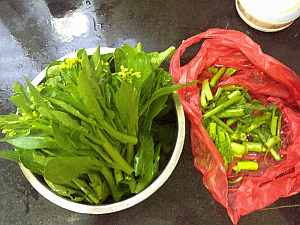
|
|
|
Recipe 1
Cheung Choi is usually covered with water and left to
simmer for a few minutes, and no longer than 5 minutes.
Apart from water you can also add a clove of garlic,
and that is all - not even salt or pepper! I personally
like to use a lot more water so the result is leaves
in a pea-green coloured soup. This is totally delicious!
For a thick and healthy soup simply pop into the blender,
removing when only a few shreds of small green leaves
are left.
Never overcook the leaves, as British chef's tend to
prefer. They are meant to be edible and not a green
mush.
Recipe 2
This is similar to above, but with a fuller flavour.
Smash a Chinese garlic and add it to a hot wok containing
a teaspoonful of oil. Fry for 1 minute before adding
half a pint of water. Bring to the boil and add the
leaves. Stir and cover with the lid. Steam for a couple
of minutes and remove the lid. Add a teaspoon of salt
and stir well in. Add a teaspoon of chicken bouillon
and stir well in. Add more water to your preference.
Cook for a further minute, stir and add to a serving
bowl with all the juice.
Recipe 3
The common alternative is to steam the leaves with a
lot of garlic. This is done by using a wok as a steamer,
and placing a dish such as small bowl or soup dish on
a rack. Add water to the wok and bring to the boil.
Add the leaves and cover for 5 minutes. There will be
a little juice when cooked, which blends beautifully
with the garlic. Steaming leads to a more intense and
slighter stronger and more bitter taste.
Recipe 4
This is as recipe 2 above, but after cooking you flash
fry the leaves for a few seconds only, tossing continuously.
Alternatively you can stir fry them for a minute or
so. This gives them a shinny look and makes them slippery
to pick up using chop sticks. Ensure all excess oil
is allowed to drain away before serving. In this case
they would be presented to table without any juice,
and normally laid out in line on a platter.
Related Pages:
Ba Choi
Choi Sum |
|
|
This information is as supplied by ourselves, and ably
supported by our friends and various internet portals. |
|
| Search
this Website |
|
|
| Descriptions |
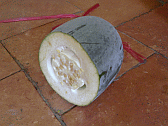
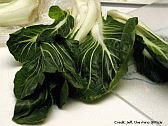
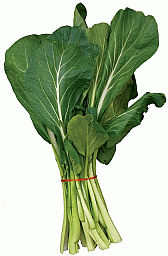
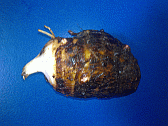
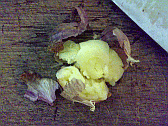
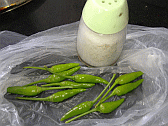
|
| Chinese Recipes |
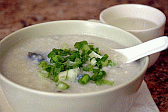
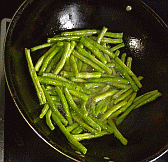
|
|